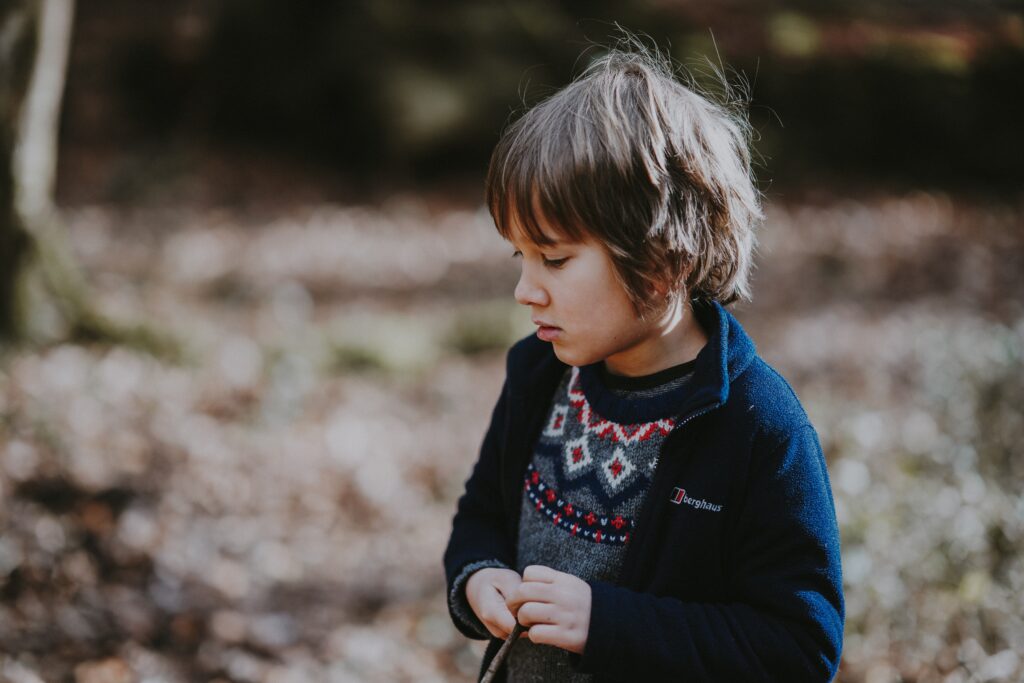Parents in our position are often faced with unique challenges, but what do you do if your autistic child likes growling?
The first thing to recognise is that you are not alone with experiencing this behaviour, it is more common than you may think.
Growling and autism
Parenting a child with autism can be both a rewarding and challenging journey.
We strive to provide the best possible care and support for our children, regardless of their unique needs and behaviours.
One aspect that some parents may encounter, especially in autistic children, is growling.
While it might be unsettling at first, it is crucial to approach this behaviour with understanding and an open mind.
Each child with autism is unique, and their experiences can vary significantly.
For some children with ASD, growling can be one of the many ways they express themselves and cope with the world around them.

Communication struggles
Communication challenges are a hallmark of autism.
Many children on the spectrum may struggle with spoken language, making it difficult for them to express their needs, emotions, or discomfort verbally.
Growling, in these cases, might serve as a form of non-verbal communication, indicating frustration, anxiety, or even happiness.
It is essential to remember that growling is not an aggressive act. It is more likely to be a way of expressing their emotions in a manner that feels comfortable to them.
Self stimulation
Self-stimulatory behaviours, also known as stimming, are common among autistic kids.
Stimming serves as a way to self-soothe and regulate emotions.
Growling might be a stimming behaviour for some children, offering a sense of comfort and predictability.
There is also the fact that autistic children often interact with the world differently to the neuro-typical.
Senses can be heightened and certain feelings which we may not even notice may be pleasurable.
If you think of the act of growling, it involves deep vibrations of the vocal cords and air rushing through the mouth.
These sensations may feel nice to your child, adding to the desire to growl.
Instead of discouraging these behaviours outright, it’s important to identify when they occur and assess whether they are harming the child or others.
If they are not harming anyone and not hindering your child’s development, one option would be to let this behaviour pass.
Mimicking and echolalia
Autistic children might engage in echolalia, which involves repeating sounds or phrases they hear, without necessarily understanding their meaning.
If they encounter growling sounds in their environment, they may mimic these vocalisations as part of their echolalic behaviour.
It could be that they have seen a character growl on a cartoon or computer game for example. Or it could even be something as simple as copying a dog who had growled in their presence.
Expressing joy
While growling is often associated with negative emotions, it’s essential to recognise that for some autistic children, it might be a way of expressing joy and excitement.
Their enthusiasm for a particular activity or event might manifest through vocalisations like growling, clapping, or humming.
Embracing these moments of joy can strengthen the parent-child bond and allow the child to feel accepted for who they are.
Sensory processing
Autistic children often experience sensory processing differences.
These are where they might be hypersensitive or hyposensitive to certain inputs.
Growling might be a response to sensory overload or a means of self-regulation.
In overwhelming or chaotic environments, the act of growling may help them manage their anxiety and regain a sense of control.
As parents, recognising these triggers can aid in creating more accommodating and calming spaces for our children.
What can parents do about the growling?
As parents, it is vital to respond to growling with empathy and patience.
Instead of trying to eliminate the behaviour entirely, consider focusing on providing alternative coping strategies.
These strategies will aim in helping the child understand and manage their emotions.
Encouraging the use of more socially acceptable forms of communication and expression can be beneficial in the long run.
Perhaps providing your child with some form of sensory input like this oral vibrating toy on Amazon may help.
Other parents have had success diverting their children away from stimming using such tools as a weighted lap blanket.
In addition consulting with a professional, such as a speech therapist, or a behavioural therapist who specialises in autism will likely help.
They can provide valuable insights and individualised strategies to address specific concerns.
Summary – autistic child growling
Growling in autistic children is a multifaceted behaviour that can serve various purposes.
It’s crucial for parents to approach this behaviour with compassion, recognising that it is a form of communication and self-expression for their child.
By understanding the underlying reasons behind growling, parents can provide better support and help their child navigate the world with greater ease and confidence.
Embracing our children’s uniqueness and celebrating their progress will undoubtedly make the journey of parenting an autistic child a more rewarding experience.

